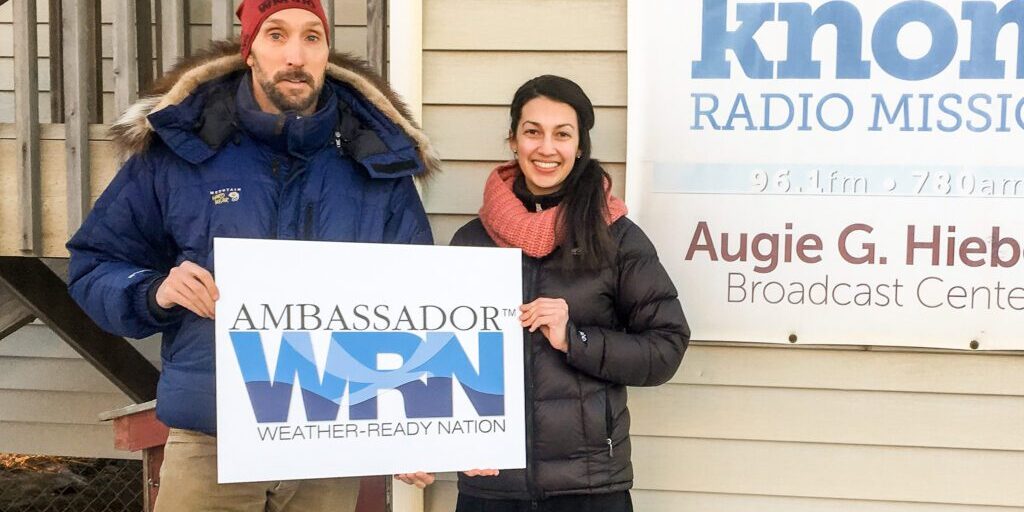Damaging back to back blizzards preceded the New Year in Western Alaska. In the last days of 2016, two storm systems of exceptional strength ripped through the heart of KNOM country with heavy snowfall, severe winds, whiteout conditions, and, for coastal communities, broken sea ice and the risk of flooding.
The hardest hit village was Savoonga on Saint Lawrence Island. Within a week of the storm’s passing, representatives from FEMA, Alaska’s Department of Homeland Security and Emergency Management, and the Red Cross were on the ground in Savoonga. KNOM volunteer Davis Hovey traveled with them as they assessed the storm damage; he reported on the storm’s aftermath for KNOM listeners. Wind gusts up to 120 mph during the storm’s worst moments had torn off sections of roofing, siding or walls from village structures and weakened the foundations of others.


Every day, your donations help KNOM broadcast local and regional weather forecasts to dozens of remote communities throughout Western Alaska. Extreme weather is a certainty for the region, which makes weather reporting essential and, sometimes, lifesaving. That’s why KNOM recently joined the Weather Ready Nation Ambassador (WRN) initiative of the National Oceanic and Atmospheric Administration (NOAA).
NOAA says its ambassador initiative “…helps unify the efforts across government, non-profits, academia, and private industry toward making the nation more ready, responsive, and resilient against extreme environmental hazards.” Therefore, KNOM, now an integrated part of a “vast network,” is committed to collaborating with NOAA to “address the impacts of extreme weather on daily life.” The goal NOAA describes is to “inform and empower communities, businesses and people to make pre-event decisions that can be life-saving and prevent or limit devastating economic losses.” Such a goal is especially vital in rural Alaska, prone to severe varieties of weather in any season of the year.




